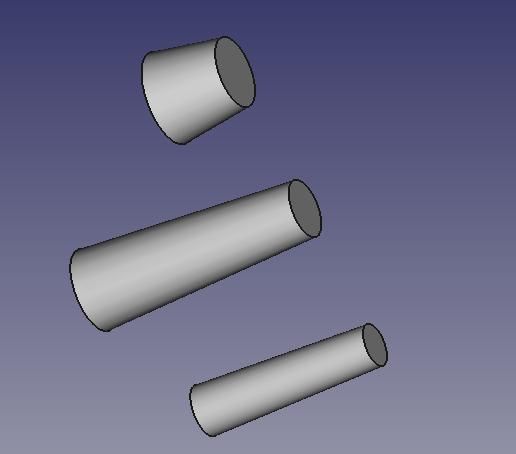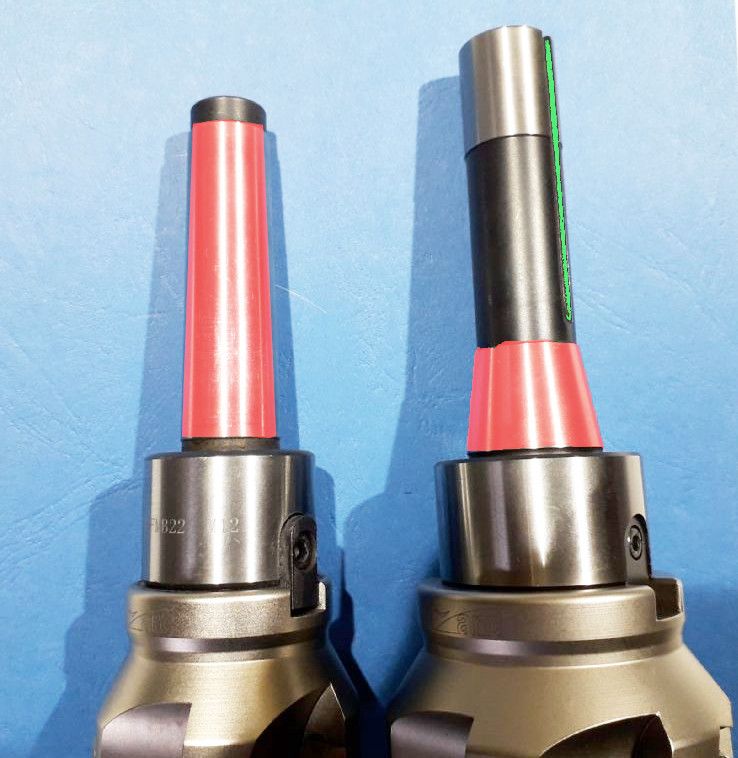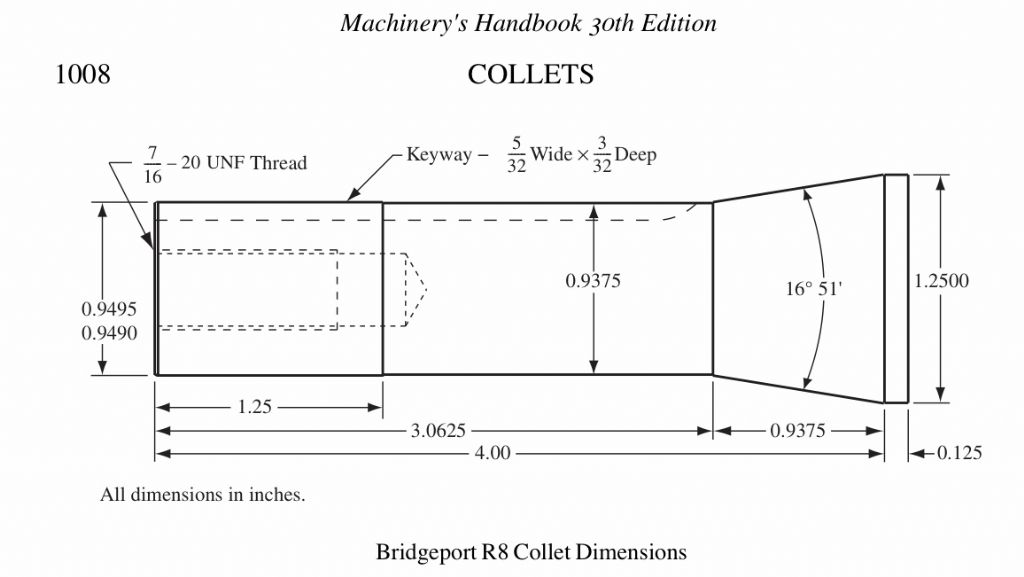Posted by old mart on 13/06/2020 13:49:51:
SOD, your illustration with the red highlights conveniently leaves out the top end of the R8. Why is that?
The point where the lack of diameter in the MT3 makes it more flexible than R8 is where the tool emerges from the spindle.
…
Ah ha, I'm not explaining myself properly!
There are two different desirable features in a milling machine's tool fixing system:
- It's ability to resist sideways bending, AND,
- Being able to transmit torque to the cutting tool without slipping.
The top of the R8 is a parallel register and no doubt it improves stiffness. On that point R8 is better than MT3 because MT tapers are slimmer. But I didn't colour the register top because it contributes nothing to power transmission. ( I believe!)
It's point two that has me worried. The R8 taper has a small surface area compared with MT, and power handling depends on it, just like a clutch. As the amount of friction between taper and socket is proportional to contact area, taper angle and drawbar pull it seems likely to me that R8 can't transfer as many watts to the cutting edge as MT2 could without slipping. Unless R8 drawbar force is higher than applied to MT?
I thought the key-way explained the difference, but owners say the R8 key-way doesn't transfer power.
I'm not convinced MT tapers are much less stiff in practice than R8 either. On their own, maybe, but when cutting they're supported by the mill's spindle.
Couple of unanswered questions:
- Any evidence that MT tools bend?
- Any evidence that R8 tapers slip?
The answer to both in normal conditions is likely 'no'. If MT doesn't bend I suggest it's not worth paying extra for R8 on a small Chinese Mill, and if R8 doesn't slip it would be daft to replace it with MT on a Bridgeport!
Dave
old mart.



![20200612_182625[1].jpg 20200612_182625[1].jpg](/wp-content/uploads/sites/4/images/member_albums/44290/866902.jpg)
![20200612_183354[1].jpg 20200612_183354[1].jpg](/wp-content/uploads/sites/4/images/member_albums/44290/866904.jpg)




